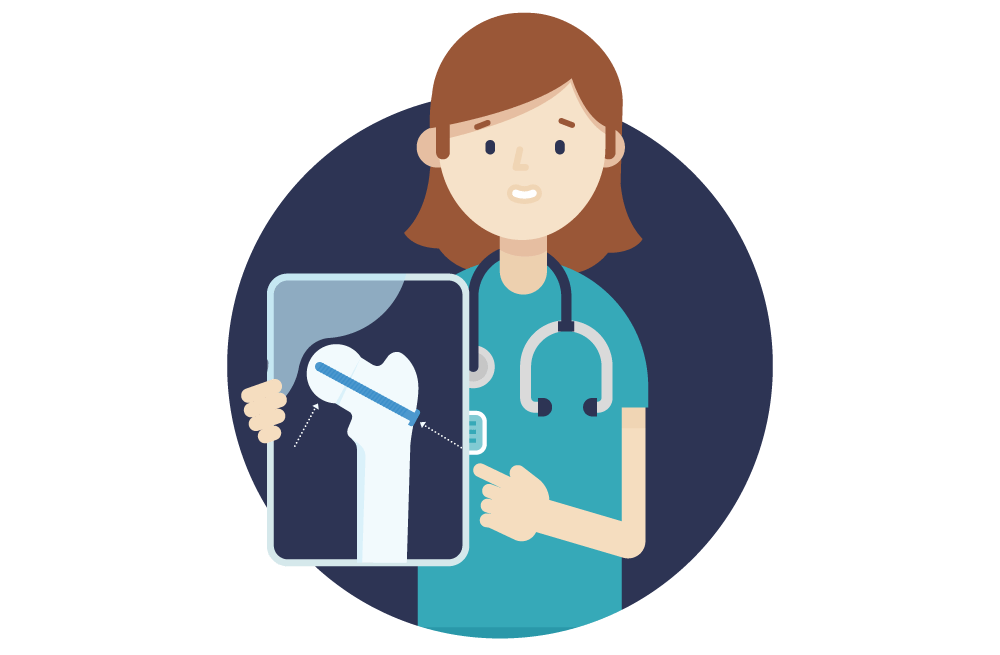Big Boss Participant Information Animation
The Big BOSS study is finding the best way to treat a problem of the hip in children and young people – called a slipped epiphysis.
Think about the hip like an ice cream.
The round hip joint is like the ball of ice cream; which sits on top of the femur bone which is like the cone.
The ice-cream usually sits on top of the cone without any problems – though sometimes it can move.
The ice cream ball could slip a little – a ‘minor slip’.
Or slip a lot - a ‘severe slip’.
Or could come loose from the cone completely - called an ‘unstable slip’.
You are watching this video because your doctors have diagnosed a Severe Slip.
Having a slipped epiphysis always involves surgery to strengthen the hip – to stop the ice-cream slipping any more.
Throughout the world, doctors treat this hip problem in different ways.
Some choose to do a key-hole operation to insert a screw to hold the hip in position.
Others choose a bigger operation to improve the shape of the hip before strengthening the hip with a screw.
Having key-hole surgery avoids a bigger surgery, but the hip shape has changed which could cause problems with walking and arthritis in the future.
Having bigger surgery makes the shape of the hip more natural, which may overcome some problems, though could damage the hip’s blood supply which may cause problems with walking and arthritis in the future.
We want to find out if one treatment is better than the other.
In the Big BOSS study, half the children and young people will have the keyhole operation, and half will have the operation to correct the shape of the hip.
You won’t be able to choose which treatment you have and neither can the doctors. When we have two groups of children who are as similar as possible, we can then compare them fairly.
If you join Big BOSS, we will ask you questions about using your leg, any pain you feel, and if you’ve missed any school.
We will send you questions by text message or e-mail. We’ll ask you these questions four times in the first year and once more in the second year.
The doctors, nurses and research team are happy to answer any questions that you may have about joining the Big BOSS study.





